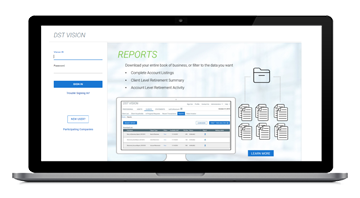Decision Economics: does more data equal better decisions?
As investors, we’re expected to follow virtually everything that may affect investment returns, from world events to the market’s daily ups and downs. Staying on top of so much information is no easy task, and the amount of time it can consume can even rival the time our kids spend on social media.

The obvious question is whether all of this data improves our ability to make good investment decisions or ultimately leads us to drown in the noise. In the second of a series of articles on how human behavior can affect investment decisions, we look at the benefits of managing our focus more effectively, including the data we choose to monitor most closely.
Herbert Simon, a noted cognitive psychologist specializing in decision-making and a Nobel Prize winner in Economic Sciences in 1978, recognized the obvious: Our challenge isn’t a lack of information but a lack of attention. Simon coined the term bounded rationality to describe the challenge of making optimal decisions given the vast quantities of information available to us, the time constraints we face, and our brain’s ability to process it all. He posited that these challenges would lead us to a decision process called satisficing, where we would attempt to find optimal answers but would quickly give up the search and default to making decisions that were good enough under the circumstances. Often, these good enough decisions would be based on our preferences or past experiences rather than probabilities, which are so critical in investment decision-making.
“What information consumes is rather obvious: it consumes the attention of its recipients. Hence a wealth of information creates a poverty of attention, and a need to allocate that attention efficiently among the overabundance of information sources that might consume it.”
—Herbert Simon
Worse still, numerous studies have shown that as the amount of data we consume increases, so too can our confidence—but not necessarily our ability to make accurate forecasts. In one famous study by Paul Slovic, a clinical psychologist in Toronto, he interviewed horse race handicappers on their views of the most important criteria to forecast race results. Each of the handicappers ranked the data in order of importance (40 pieces of information in all) and were then asked to make predictions. In round one, the 5 most important pieces of data were used to forecast a total of 10 races. In round two, 10 pieces of data were given, followed by rounds three and four with 20 and 40 pieces of data, respectively. As you might expect, confidence continued to rise as more information was consumed, but accuracy quickly flatlined and gradually declined.¹ The implications for investing should be obvious, especially given the inherent uncertainty and level of randomness in the investment domain. It’s easy to drown in the noise and lose signal value.
Too much information: mean changes in confidence and accuracy with increasing amounts of information (%)
The signals dashboard
One technique increasingly adopted by institutional managers is the use of a dashboard or market indicators. Much like the dashboard in your car, the goal is to monitor the most critical market gauges, enabling you to keep your eyes on the road ahead. The dashboard can play a central role in the investment committee meeting by centering the deliberations on data with empirical value to impact markets or the economy, thereby avoiding the distractions of data subject to short-term emotion or revision. Price-based data is typically preferable to survey-based data but, in both cases, there should be research (either behavioral or economic) as to why it deserves consideration—in other words, have signal value—when it comes to making portfolio investment decisions. In our view, the gold standard is whether you can link the indicator to the historical performance of an asset class.
One example for equities would be high-yield credit spreads. High yield sits just above equities in the capital structure and, as credit spreads widen, equities have historically acted negatively. The reverse has been true when credit spreads are narrowing, a reflection of improving credit conditions.
Another example is the U.S. dollar versus major trading partners; a rising dollar has historically been associated with periods of U.S. outperformance versus international equities. The logic is simple: A rising dollar is often a reflection of stronger relative growth and interest rates in the United States, and the strengthening dollar further results in negative currency translation in shares of international equities for U.S.-based investors. This pattern can be seen in the past two decades. U.S. stocks have been outperforming international stocks and vice versa. Between 2002 and 2005 was a period of weakening in the dollar and outperformance of international equities.
Dollar strength vs. stock performance
It should be emphasized that the goal of a market dashboard isn’t to engage in day trading, but rather to help make less frequent, more strategic decisions as part of a definable, defendable, and repeatable process. Examples include the overall allocation to equities relative to a neutral policy position, the ratio of U.S. equities to international equities in the stock sleeve, and the duration positioning in the bond sleeve. A dashboard can also be an effective tool for educating clients on the data that’s most important to managing their wealth, helping them keep their emotions in check, and further differentiating your approach from the competition.
The Investment Consulting Group at Manulife John Hancock Investments is here to help and offers a range of services, from formal model reviews to manager selection to investment decision process. For more information on building your own signals dashboard, contact us today.
1 “Behavioral Problems of Adhering to a Decision Policy,” Paul Slovic, 5/1/73.
Important disclosures
Important disclosures
This material is not intended to be, nor shall it be interpreted or construed as, a recommendation or providing advice, impartial or otherwise. Manulife John Hancock Investments and its representatives and affiliates may receive compensation derived from the sale of and/or from any investment made in its products and services.
MF4518825






